Employment Verification Letter Template for Easy Use
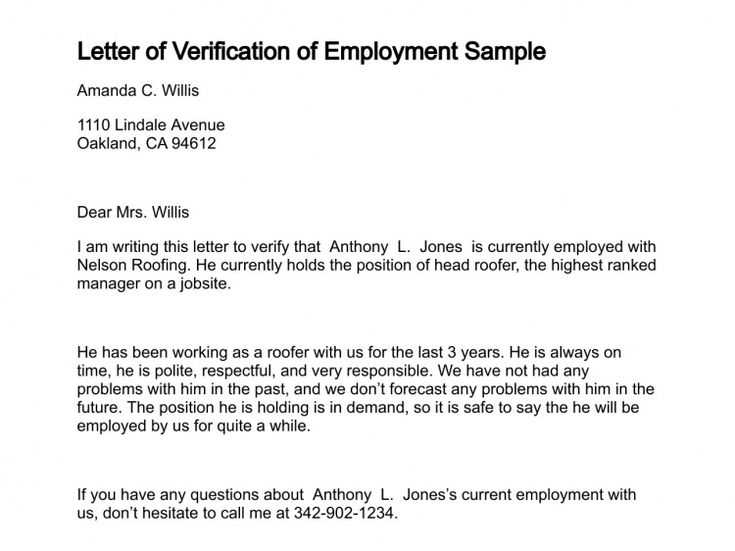
In various professional settings, providing a formal confirmation of someone’s position or employment status is a common requirement. Whether for a loan application, rental agreement, or visa process, having a clear and precise record can make the process smoother for both parties involved.
Crafting such a document can seem complex, but using a structured approach can simplify the task. A well-organized written statement can highlight the necessary details without confusion or ambiguity. It ensures all important information is conveyed in a way that is both professional and legally sound.
Customizing a pre-designed form can save valuable time while ensuring accuracy. With a few adjustments to suit the specific circumstances, you can quickly generate a reliable record that meets the required standards. The key is to include all relevant details while maintaining clarity and conciseness.
What is an Employment Verification Letter
A formal document that confirms an individual’s role within a company or organization plays a crucial role in many administrative processes. This statement serves as proof of the person’s job, the duration of their tenure, and their responsibilities, all of which are often required by third parties such as lenders, landlords, or immigration authorities.
Purpose of the Document
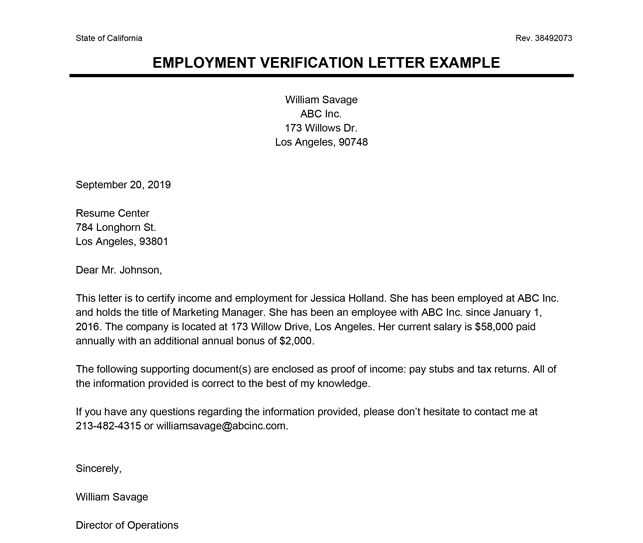
The main goal of such a confirmation is to establish credibility. It offers verification that the individual is actively employed, earning a specific income, or fulfilling a certain position. These details help third parties assess the applicant’s eligibility for services, such as loans or housing, or to complete other official procedures.
Key Details Included
A typical confirmation includes basic information like the employee’s name, job title, the start date of their role, and sometimes, their salary. It may also mention additional information such as the work schedule or specific achievements, depending on the nature of the request.
Why Employers Use Verification Letters
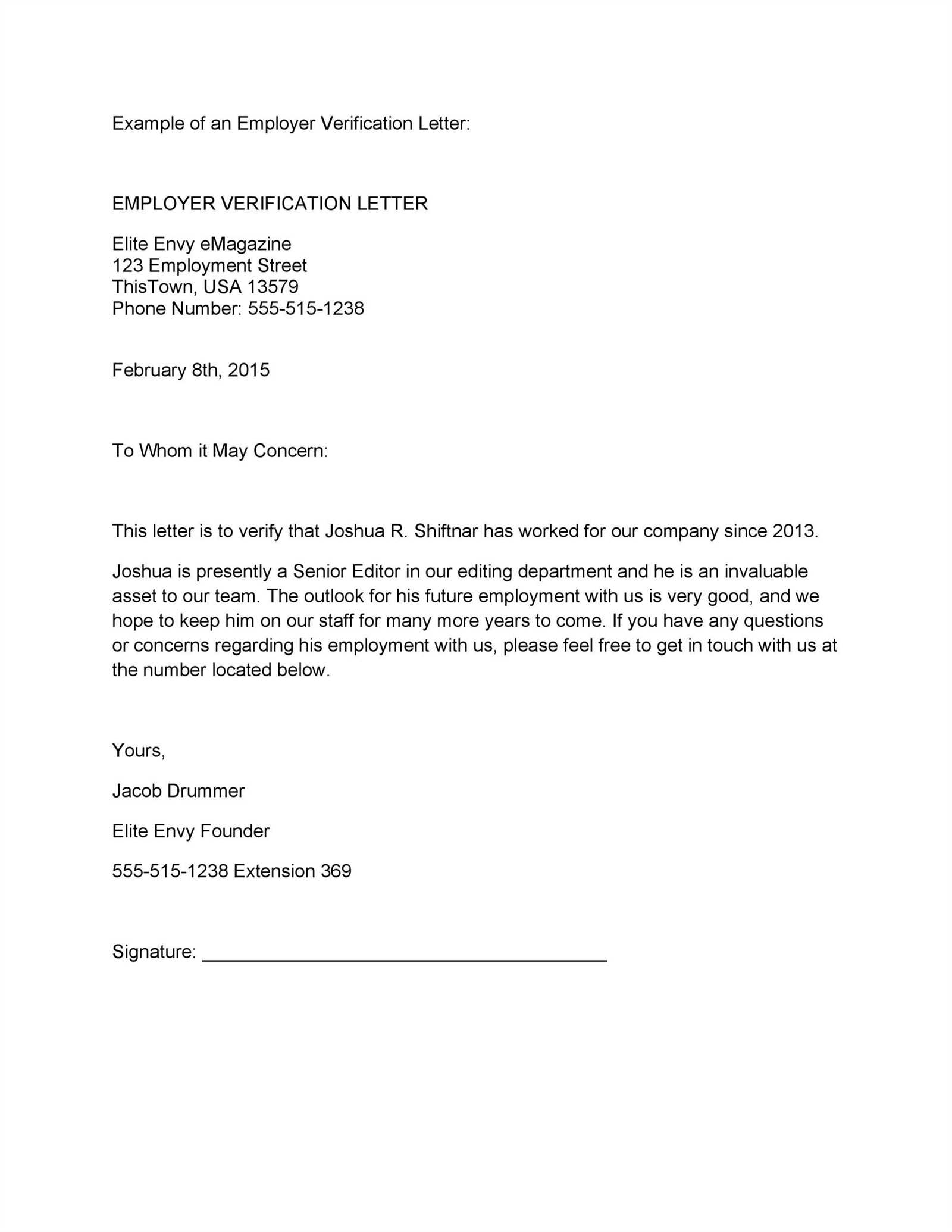
Employers often provide formal documents confirming an individual’s position and work history when requested by outside organizations or individuals. These records help verify the accuracy of personal claims and ensure transparency during various processes, such as loan applications or housing agreements.
There are several reasons why such records are essential in the professional world. Below are some common scenarios where employers might provide this type of confirmation:
| Reason | Purpose |
|---|---|
| Loan Applications | To confirm income and job stability for individuals applying for personal or home loans. |
| Housing Rentals | To verify a tenant’s ability to pay rent based on their salary and work history. |
| Visa or Immigration Applications | To prove the applicant’s employment status as part of the visa approval process. |
| Background Checks | To verify the legitimacy of an applicant’s job history during hiring processes. |
Benefits of Using a Template
Using a pre-designed structure for formal documentation can significantly simplify the process. By following a clear and organized format, you can ensure that all necessary details are included without overlooking important information. This approach saves time and reduces the likelihood of errors.
One of the key advantages of relying on a pre-made structure is consistency. It ensures that each document produced is uniform, professional, and meets the required standards. This consistency is especially valuable for organizations that need to provide such confirmations regularly, as it maintains a high level of accuracy and professionalism.
Additionally, using a predefined format can help streamline communication. By providing a clear, easily understandable document, the chances of confusion or misunderstanding are minimized. This results in quicker processing and smoother interactions between employers and external parties.
How to Structure the Document
Creating a clear and professional statement involves organizing the content in a logical and easy-to-follow manner. A well-structured document ensures that all necessary details are presented in a concise format, minimizing confusion and enhancing the overall effectiveness.
Essential Sections
To start, the document should include several key components. First, introduce the purpose of the statement, confirming the individual’s position and role within the company. Then, include specific details such as the person’s name, job title, and the duration of their tenure. This information helps establish the necessary context for any third party reviewing the document.
Formatting Tips
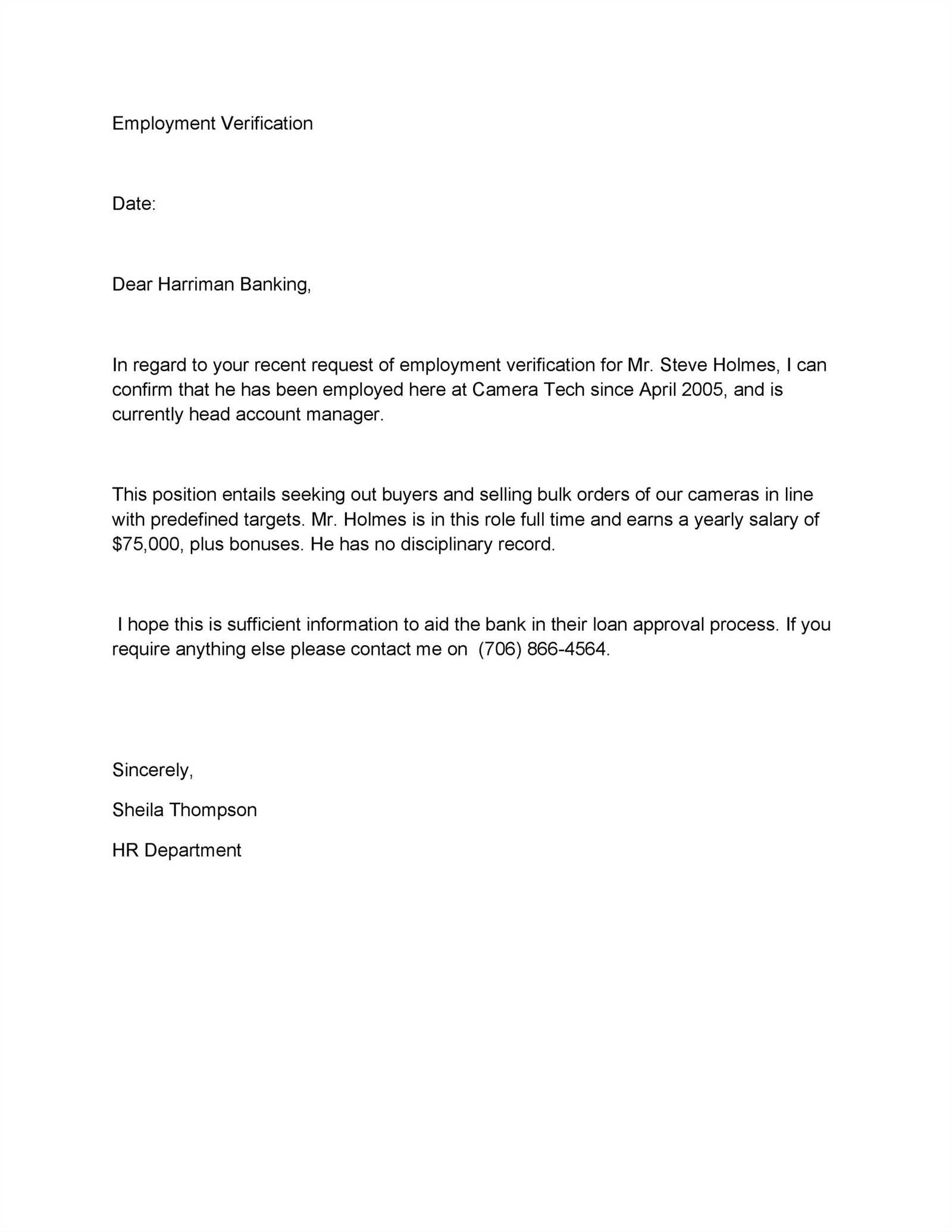
Maintain a professional tone throughout the document, using clear and simple language. Keep the layout neat and organized, with appropriate spacing between sections to ensure readability. Proofread the content carefully to eliminate any errors before finalizing it.
Essential Information to Include
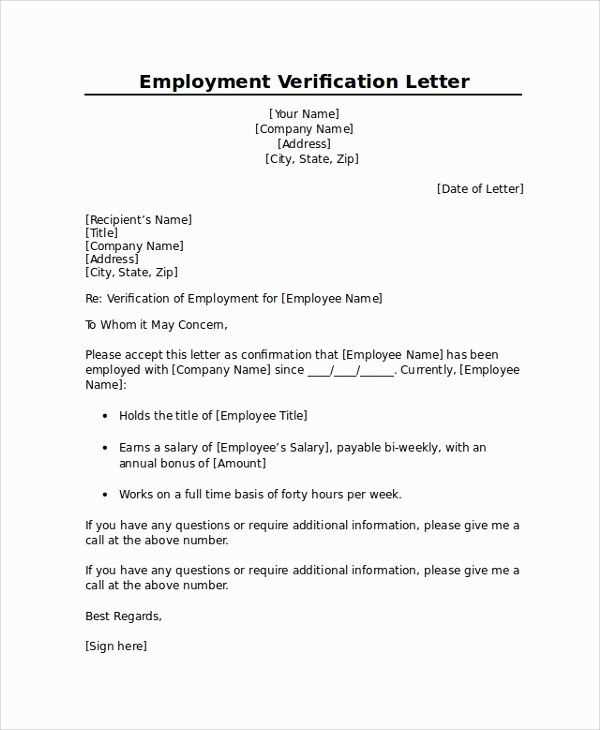
When preparing a formal document to confirm someone’s role or work status, it is crucial to ensure all necessary details are included. Providing accurate and complete information helps to avoid confusion and ensures the document meets its intended purpose.
The following details should always be present in such a document:
- Employee’s Full Name: Ensure the full name is correctly spelled to avoid any confusion.
- Job Title: Clearly specify the position held within the organization.
- Start Date: Mention the date when the individual began their role.
- Employment Status: Indicate whether the individual is currently employed or has left the organization.
- Salary (if required): Some requests may require details about the individual’s salary or compensation.
- Job Responsibilities (if relevant): Highlight any specific duties performed if the context demands it.
By ensuring these key points are included, the document will serve its purpose efficiently and accurately.
Customizing the Template for Specific Needs
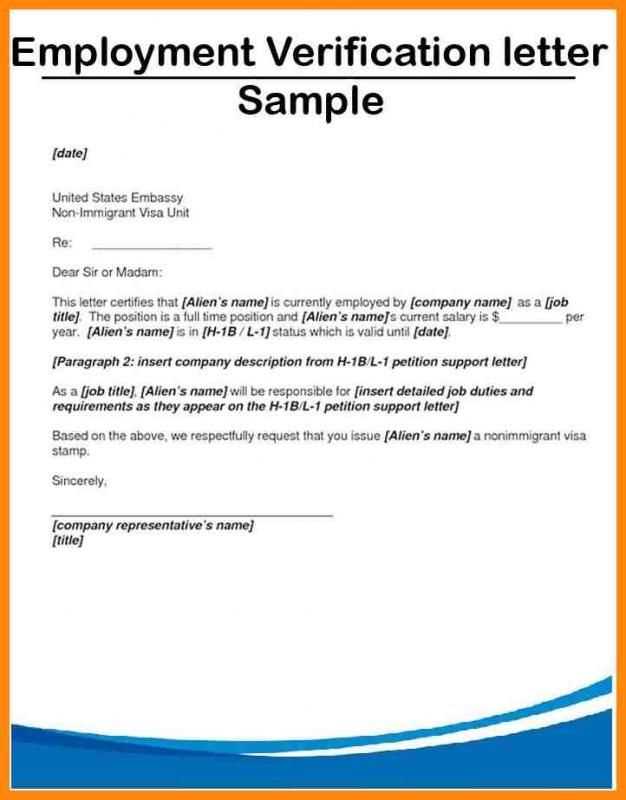
When creating a formal document to confirm an individual’s role or work status, it’s important to tailor the content to meet the specific requirements of the request. Different situations may require different details or formats, so adjusting the structure to suit the context ensures that the document serves its purpose effectively.
For instance, if the confirmation is for a housing application, you might need to emphasize the individual’s income and job stability. Alternatively, for a visa application, additional details about job duties and the individual’s work history may be necessary. In either case, you can adapt the document’s content to highlight the most relevant information.
Another way to customize the content is by adjusting the tone. For more formal requests, the document should be written in a professional, precise manner. For less formal situations, a simpler and more straightforward approach might be appropriate. Tailoring the language and structure helps to make the document more effective in different contexts.